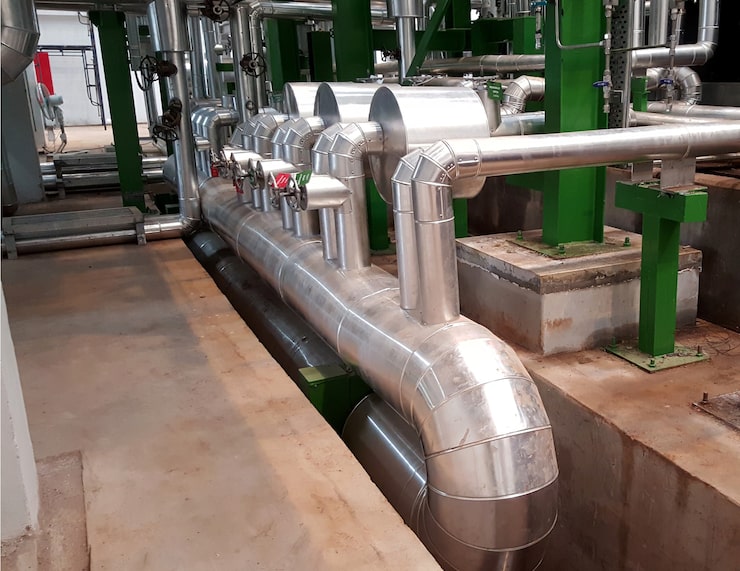When engineers, manufacturers, or procurement specialists evaluate piping options, one of the most common questions they ask is what is the difference between extruded and seamless pipe. These two manufacturing methods produce pipes with distinct characteristics in terms of strength, cost, surface finish, and intended application. Understanding these differences is critical for industries such as oil and gas, chemical processing, power generation, and structural engineering, where the right choice directly affects performance, safety, and cost-efficiency.

Definition of Extruded Pipe
An extruded pipe is manufactured using an extrusion process where a billet of metal—commonly aluminum, copper, or stainless steel—is heated to a specific temperature and then forced through a die to form the desired shape. The extrusion can be done either hot or cold, depending on the metal type and required tolerances. In the case of metal pipes, the extrusion process often involves creating a hollow billet or using a mandrel to form the interior diameter as the billet passes through the die. The resulting product has a continuous cross-section, and its surface finish depends on die quality and extrusion speed. Extruded pipes can be produced in long continuous lengths and cut to size later, offering high flexibility in design.
Definition of Seamless Pipe
A seamless pipe, on the other hand, is produced without any weld seam. It starts with a solid round billet of metal, which is heated and pierced through the center using a mandrel or piercing mill. The billet is then elongated and rolled to achieve the desired diameter and wall thickness. The absence of a seam means there are no potential weak points along the pipe’s length, making seamless pipes highly valued in high-pressure, high-temperature, and critical safety applications. Seamless pipes often meet stricter dimensional tolerances and exhibit better mechanical uniformity across the entire pipe.
Manufacturing Process Differences
The extrusion process for pipes is generally faster for small to medium production runs, especially when complex profiles or non-standard shapes are needed. It allows for tight control over the outer diameter and wall thickness but may have limitations for extremely large diameters. Extruded pipes might also require additional machining or finishing to achieve very high surface smoothness or exact tolerances.
For seamless pipe manufacturing, the process is more complex and often more expensive. It involves multiple stages: billet heating, piercing, elongation, sizing, and cooling. This multi-step process allows seamless pipes to handle demanding mechanical loads without the risk of weld failure, making them ideal for critical infrastructure, aerospace, and petrochemical plants.
Strength and Durability Considerations
One of the most notable differences between extruded and seamless pipes lies in their strength characteristics. A seamless pipe, with no weld seam, can generally withstand higher internal pressures and is less prone to failure under cyclic loading. The material grain flows continuously around the pipe’s circumference, contributing to greater mechanical integrity.
In contrast, extruded pipes may be slightly less robust in extremely high-pressure environments, especially if the extrusion process introduces microstructural inconsistencies. However, advances in extrusion technology and heat treatment have significantly improved the durability of extruded pipes, making them suitable for many industrial uses.
Cost and Production Efficiency
Cost is often a deciding factor between the two options. Extruded pipes can be more economical, especially when large volumes or specific shapes are required. The tooling for extrusion is relatively affordable, and the process can be adapted to different alloys and sizes without significant downtime.
Seamless pipes tend to have higher production costs due to the more demanding manufacturing steps, the need for high-quality billets, and the strict dimensional checks. However, for applications where safety margins are critical, the higher cost is justified by the performance benefits.
Applications and Industry Preferences
In industries such as construction, general manufacturing, and transportation, extruded pipes are favored for their lower cost, ease of fabrication, and ability to accommodate complex cross-sections. They are common in frameworks, heat exchangers, irrigation systems, and low-to-moderate pressure fluid transport.
Seamless pipes dominate in oil and gas pipelines, steam boilers, chemical reactors, and aerospace hydraulic systems—environments where even a small defect could result in catastrophic failure. These pipes are also chosen for medical and instrumentation tubing, where precision and reliability are paramount.
Dimensional and Surface Finish Factors
Extruded pipes typically have a good surface finish but may require secondary machining for high-precision uses. Dimensional variations are more likely compared to seamless pipes, especially in large diameters.
Seamless pipes generally have tighter tolerances and more uniform wall thicknesses. This uniformity makes them ideal for systems that require exact flow rates or consistent mechanical performance.
Corrosion Resistance and Alloy Selection
Both extruded and seamless pipes can be produced from a wide range of metals, including carbon steel, stainless steel, titanium, aluminum, and copper alloys. The manufacturing method itself does not drastically change the inherent corrosion resistance of the material, but certain processes—such as extrusion with specific lubricants or seamless production with particular heat treatments—can influence surface passivation and long-term durability.


